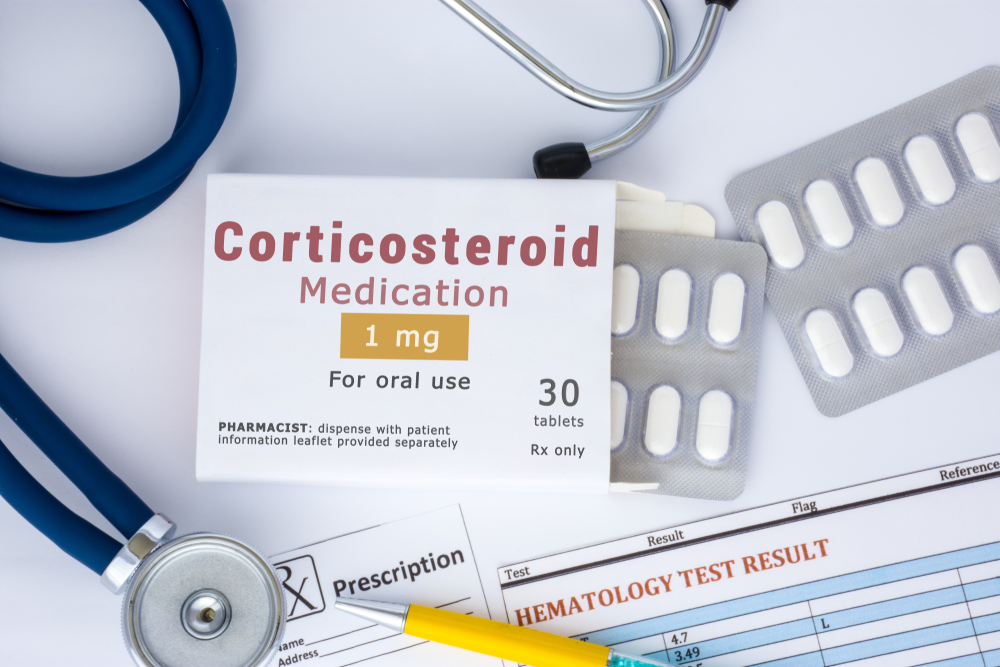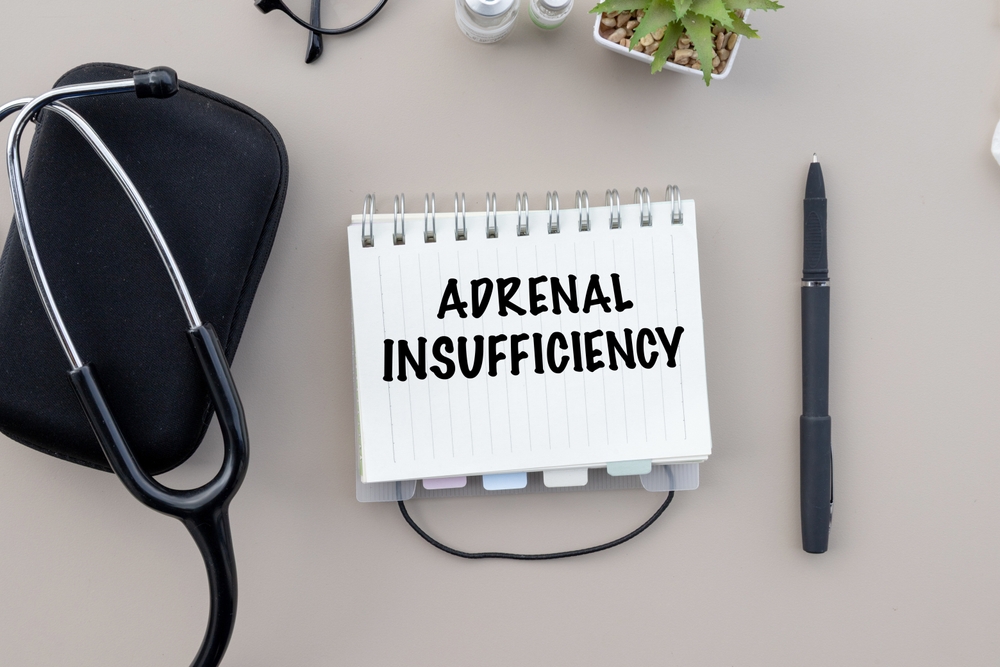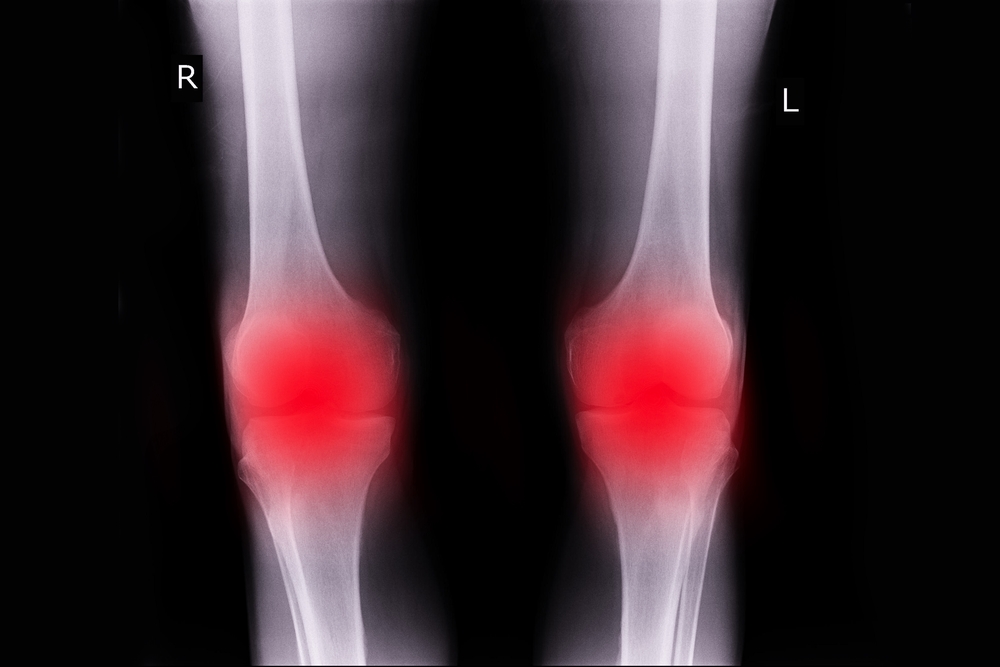Corticosteroids are a class of medications widely used for their potent anti-inflammatory and immunosuppressive properties. For many people, these medications are life-savers. They play a crucial role in managing a diverse range of health conditions, including chronic inflammatory diseases, allergies, asthma, and autoimmune disorders. Corticosteroids have proven to be effective in controlling symptoms and improving quality of life for many of these patients. Their long-term use and potential side effects, however, have raised concerns about their impact on chronic diseases.
Understanding Corticosteroids
Most of us have heard of corticosteroids, maybe even used them, but how many of us actually fully understand what they are? Corticosteroids are synthetic drugs designed to mimic the hormones produced by the adrenal glands. They can be classified into two groups. These are glucocorticoids, which primarily regulate metabolism and immune responses, and mineralocorticoids, which control electrolyte balance and fluid levels in the body.
Mechanism of Action of Corticosteroids

Corticosteroids work by binding the specific receptors in your cells. This allows them to modulate gene expression and suppress the inflammatory proteins that are causing your condition or immune reaction. The result is a reduction in inflammation and, therefore, a reduction in the pain and swelling associated with various health conditions.
Common Conditions Treated with Corticosteroids

There are many conditions that doctors use corticosteroids to treat and for which to manage symptoms. These conditions and illnesses include:
- Rheumatoid arthritis
- lupus
- inflammatory bowel disease (IBD)
- asthma
- Chronic obstructive pulmonary disease (COPD)
- allergies
- eczema
- posoriasis
- conjunctivitis and other eye conditions
- certain types of cancer
- other autoimmune diseases
In these instances, the doctor will help you find the right medication and dosage for you and your condition. From there, the doctor will work with you and your feedback to adjust to ensure that you are receiving the treatment you need with minimal side effects, safely.
Methods of Administration

There are different ways to administer corticosteroids. The method chosen will depend on the situation, the patient, and the condition being treated. Again, this will be decided upon between you and your doctor. If you ever don’t feel comfortable or sure about the methods your doctor is prescribing or don’t feel your concerns are being listened to, find a second opinion.
Oral Administration

Oral corticosteroids are commonly prescribed in the form of tablets or liquids. They are generally for systemic effects in conditions like autoimmune diseases and severe allergies. These can include asthma, allergies, IBD, COPD, rheumatoid arthritis, lupus, and eczema. They are also used to prevent organ rejection by the body after a transplant.
Inhalation

Inhaled corticosteroids are often used to treat respiratory conditions. These include asthma and COPD to reduce inflammation of the airways and improve breathing. People with asthma usually carry inhalers that have corticosteroids in them. These are used either in case of an asthma attack or simply as an aid, particularly when doing physical activity. Use for these in sporting situations, especially at a high level, requires an official diagnosis and prescription from a certified medical professional.
Topical Application

Topical corticosteroids come in the form of creams, ointments, and lotions. These are applied directly to the skin, particularly affected areas, to relieve itching, redness, and inflammation. These are generally prescribed for skin conditions such as eczema and psoriasis.
Injections

Corticosteroid injections are administered directly into joints, tendons, or soft tissues. This is to relieve pain and inflammation from conditions such as arthritis, tendonitis, and bursitis. These injections will also be used by sports medicine doctors to treat certain sports injuries and conditions, either acute/traumatic injuries or overuse injuries.
Side Effects of Corticosteroids

Like all medications, corticosteroids don’t come without their potential side effects. As to what those side effects will be, and how severe they may be, is highly dependent on various factors. It will depend on the type of corticosteroids used, the method of administration, the condition they are being used to treat, as well as the individual themselves. We are all different, and therefore, the way that medications affect us will vary from person to person.
Side Effects of Oral Corticosteroids

Taking corticosteroids orally, either in pill or liquid form, is generally the easiest and most accessible method for many people. That being said, depending on the person, the side effects might not be worth the reward. Common side effects include weight gain, high blood pressure, high blood sugar, osteoporosis, mood change, and increased susceptibility to infections. This means for people with obesity, cardiovascular disease, and diabetes, these may not be advisable. For menopausal women, older women, or women at high risk for osteoporosis, this may also be problematic. Finally, oral corticosteroids may not be a viable option for those with compromised immune systems, as they are already at higher risk of infections and viruses.
Side Effects of Inhaled Corticosteroids

Some common side effects of inhaled corticosteroids include oral thrush, hoarseness, and increased risk of pneumonia. This is particularly true when used at high doses or for prolonged periods. They may not be ideal for people who have compromised immune systems, as they could already be at higher risk for infections such as pneumonia. Balancing the risk will be a discussion with a qualified medical professional.
Side Effects of Topical Corticosteroids

While they can help relieve many skin conditions, topical corticosteroids can still be quite hard on the skin. Their use may lead to skin thinning, discoloration, stretch marks, and increased hair growth in the affected areas. Be sure to discuss these potential side effects with your doctor and how to mitigate them. Monitor your skin closely while using this medication and speak with your doctor if you notice any undesirable changes.
Side Effects of Injected Corticosteroids

As with any vaccine or injection, injected corticosteroids can cause temporary pain at the injection site. This pain should go away within a certain amount of time (your doctor will advise you). If it does not, speak with them to better understand why and what to do about it. Other side effects include pigmentation changes, and, rarely, allergic reactions.
Minimizing the Risk of Side Effects

Side effects are often viewed as inevitable and something that you just have to ‘grim and bear.’ This, however, is not necessarily the case. There are things that you can do to minimize the risk of side effects and/or decrease their severity. As always, if side effects are severe or overwhelming, speak to your doctor. Usually there are changes that can be made to treatment plans. Remember, the idea of taking medication is to improve your condition and quality of life, not replace one painful or uncomfortable thing with another.
Strategies to Reduce Side Effects

The first step to minimizing the risk of corticosteroid side effects is to use the lowest effective dose possible. Generally, your doctor will start you on the lowest dose that they can and together you will monitor for improvement. If that dose is not producing the desired effect, they will incrementally (that is to say, little by little) increase the dose until you arrive at one that works for you. The second step is to use the medication for the shortest possible duration. The longer you are on a medication, the more likely you are to develop side effects. In order to use the lowest possible dose for the shortest possible duration, your doctor will incorporate other treatment modalities and regular monitoring. For example, many inflammatory and autoimmune conditions have triggers that can be successfully managed using lifestyle modifications. This is often done through diet and the avoidance of certain triggers in combination with medication. Your adherence to the suggested lifestyle changes is up to you. The more you manage your lifestyle, the less medication you will need and, therefore, the least amount of side effects possible.
Monitoring and Management of Side Effects

For some conditions, long-term corticosteroid therapy is necessary. In these cases, regular monitoring is required. Your doctor will periodically check your blood pressure, blood glucose levels, and bone density and schedule regular eye exams to detect and manage any emerging side effects promptly. It is also up to you, the patient, to be an active participant in your treatment. By this I mean that you should monitor yourself and how you are feeling. You may often be the first person to start noticing a change or a side effect starting up. If and when this happens, it is important that you write down the details, take any pictures if necessary, and report it to your doctor as quickly as possible. Early intervention will help you and your doctor take care of side effects before they become severe or dangerous.
Discussion on Long-Term Use and Adrenal Function

Long-term use of any medication is never the goal and is generally not recommended by any medical professional. As mentioned already: The goal is the lowest possible dose for the shortest possible duration. Corticosteroids are no different. Prolonged use of corticosteroids can suppress the adrenal glands’ natural production of cortisol. This can lead to adrenal insufficiency, which may require gradual tapering of the medication to allow the adrenal glands to recover their function. Again, the goal is to avoid this entirely.
Corticosteroids and Chronic Diseases

While corticosteroids are used to treat many chronic conditions, there have also been several studies done that look at the intricate relationship between corticosteroid use and the potential onset or exacerbation of chronic diseases. These studies have spanned various health domains. The research has shown a complex interplay between corticosteroids and conditions such as diabetes, cardiovascular disease, osteoporosis, and some psychiatric disorders.
Diabetes

Corticosteroids have been linked to insulin resistance and disturbances in glucose metabolism. This increases the risk of diabetes development, as well as may worsen the condition for diabetic and pre-diabetic patients. For this reason, doctors will closely monitor blood glucose levels and other diabetes markers in patients. This is especially if this person has diabetes already or has been marked as a potential risk for the disease.
Cardiovascular Disease

The impact of corticosteroids on cardiovascular health is multifaceted. Studies suggest that there is a potential association with hypertension, dyslipidemia, and an increased risk of cardiovascular events, including heart attack. Careful heart monitoring and regular cardiovascular health check-ups are required for patients taking corticosteroids. This is most important for patients already at higher risk for cardiovascular disease or who have already been diagnosed.
Read More: Bell’s Palsy: What Causes It, and Symptoms to Look Out For
Osteoporosis

Osteoporosis is characterized by reduced bone density and increased risk of fracture. Women are generally the most susceptible, with older women and women who have suffered from disordered eating and/or eating disorders being at greater risk. The relationship between osteoporosis and corticosteroid use has been scrutinized due to the medication’s potential interference with calcium absorption and bone-weakening effects.
Mental Health

The intricate interplay between corticosteroids and mental health is a subject of investigation. Studies are exploring the potential contribution of corticosteroid-induced mood changes, anxiety, and depressive symptoms in patients underdoing prolonged treatment. If a patient has a known history of mental health difficulties, these should be openly discussed with their doctor. This way, the doctor can make an informed plan of treatment for their patient.
Risk vs. Benefits of Corticosteroid Use in Chronic Disease Management

While corticosteroids are known to impact metabolic, cardiovascular, and musculoskeletal health, the exact mechanisms underlying their potential role in triggering or worsening chronic diseases remains complex, multifactorial, and not fully understood. The decision to use corticosteroids in managing chronic diseases should be based on a careful evaluation of the benefits of symptom control and quality of life versus the known risks and potential long-term impact. This will be a highly individual decision. After a comprehensive risk assessment, there needs to be close monitoring of the patient’s health and symptoms.
Read More: Top 10 Natural Remedies for Sinus Infections (Sinusitis)
Possible Alternatives to Corticosteroids

Corticosteroids have their place in disease management. However, there is a place for alternatives. When considering possible alternatives to corticosteroids, the condition being treated and the type of corticosteroids being used must be considered. As always, this has to be a decision made with a qualified medical professional. If not, it can lead to worsening conditions and highly dangerous outcomes.
Oral Corticosteroids

For conditions requiring oral corticosteroids, alternative treatments could include disease-modifying antirheumatic drugs (DMARDs) and biologic therapies. These would be for inflammatory conditions such as rheumatoid arthritis and inflammatory bowel disease. These medications aim to target the underlying disease process and minimize the need for systemic corticosteroids.
Topical Corticosteroids

For skin conditions, topical corticosteroids could be replaced by calcineurin inhibitors like tacrolimus or pimecrolimus for conditions such as eczema. These medications provide anti-inflammatory effects without the side effects associated with topical corticosteroids. They may or may not work for everyone, however. In addition, many skin conditions have dietary triggers as well as other products such as detergents and fabrics. One can often effectively manage their symptoms, minimizing the frequency at which they need to use a topical medication.
Inhaled Corticosteroids

For managing asthma or COPD, leukotriene antagonists or long-acting bronchodilators may be a viable alternative. These medications can help to control airway inflammation and bronchospasms while reducing the reliance on corticosteroid inhalers. Still, it is important to have an inhaler on-hand always, as these can deliver life-saving medication in the event of an asthma attack.
Injected Corticosteroids

For conditions like joint inflammation or pain, alternatives such as hyaluronic acid injections, platelet-rich plasma therapy, or even physical therapy may offer relief without the systemic effects associated with corticosteroid injections. These therapies focus on promoting healing, reducing inflammation, and improving joint function. That being said, they may or may not effectively treat every individual’s condition.
The Bottom Line

Corticosteroids play a vital role in treating a wide range of health conditions by effectively suppressing inflammation and immune responses. While they can provide important and significant relief for patients, it is essential to be aware of their potential side effects. This is especially true in the case of longer-term use. Healthcare providers must work closely with their patients to monitor and manage any emerging complications. The link between corticosteroid use and chronic diseases remains an area of ongoing research. The emphasis, as always, should be on individualized treatment approaches and regular follow-ups to optimize patient outcomes and minimize the potential risks.
Read More: 9 Medical Emergencies in People With Cancer You Should Know
Disclaimer: This information is not intended to be a substitute for professional medical advice, diagnosis or treatment and is for information only. Always seek the advice of your physician or another qualified health provider with any questions about your medical condition and/or current medication. Do not disregard professional medical advice or delay seeking advice or treatment because of something you have read here.
